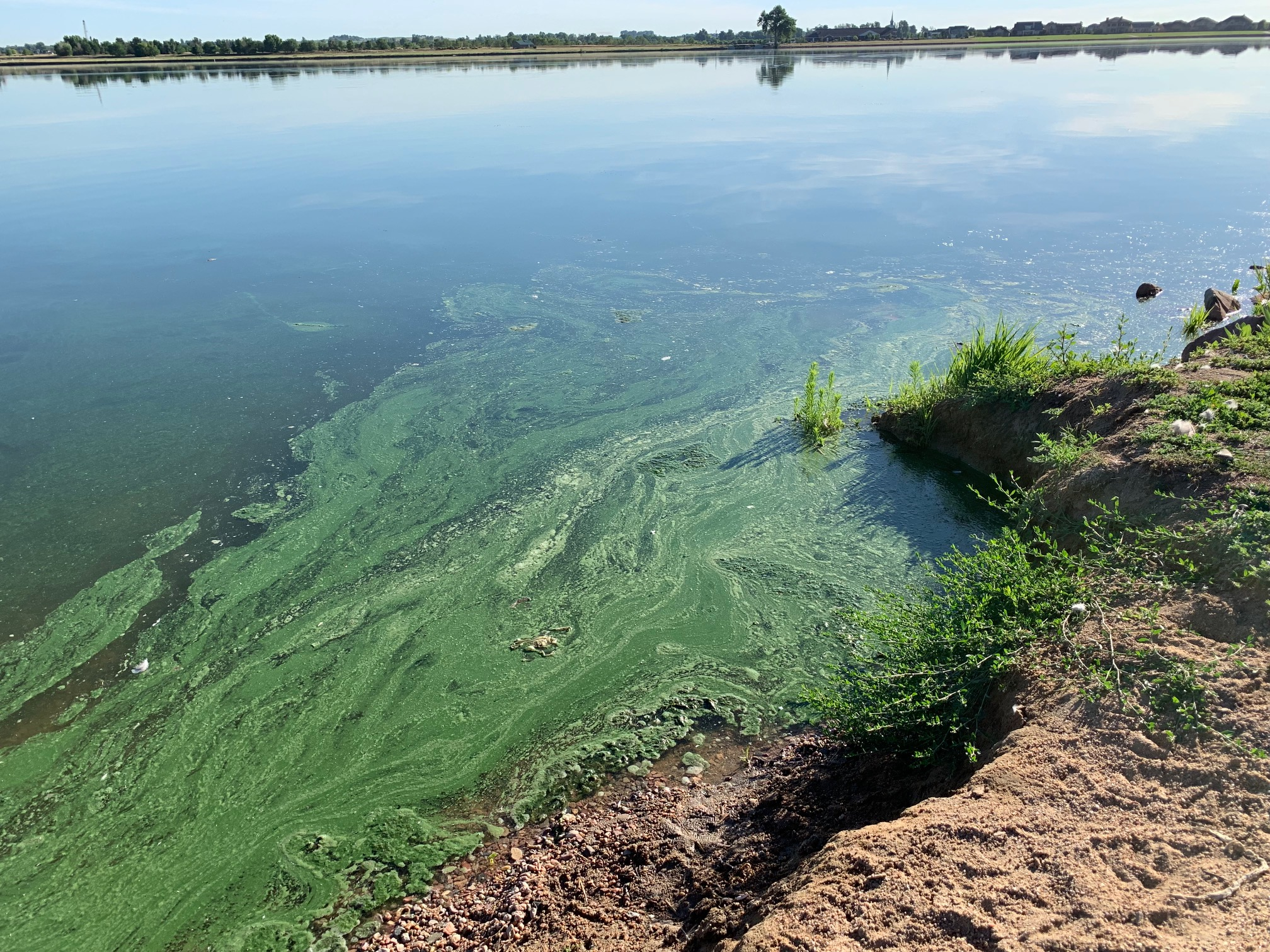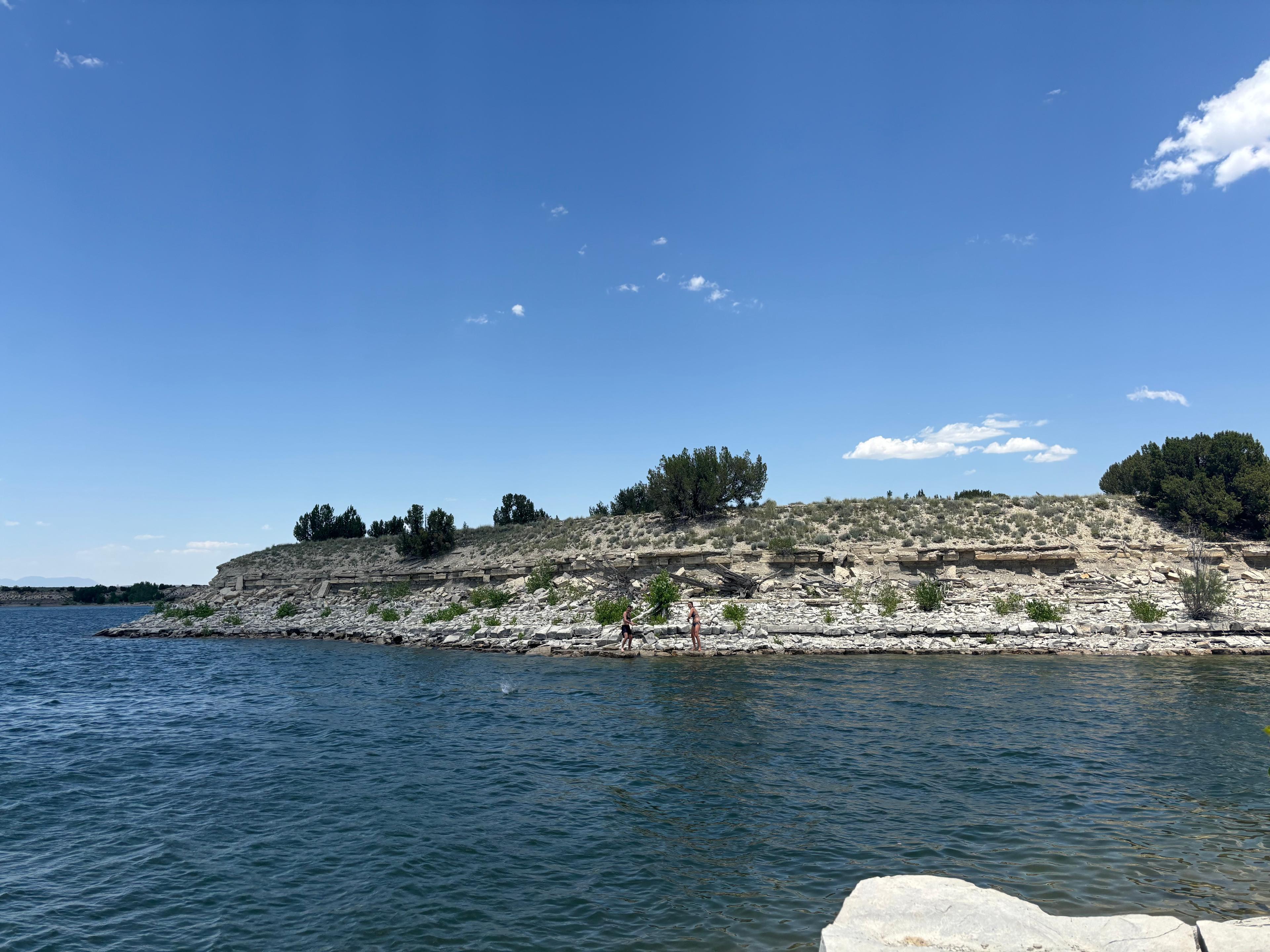
Harmful blue-green algae blooms have been found in Colorado, but experts predict they won’t stick around much longer.
The blooms — they look like thick pea soup or bright green paint on top of the water — usually pop up in July with higher temperatures and in stagnant or slow-moving water. They eventually die off around September as the weather cools down.
Health officials and municipalities have reported they’re monitoring at least a dozen lakes in Colorado with dangerous or potentially dangerous algae. Health effects vary depending on the kind of bacteria in the algae, but symptoms are pretty nasty and include skin irritation, rashes, blisters around the mouth and nose and other problems.
“The blooms happen when the ecosystem gets out of balance,” said Sara Erickson with Colorado’s Department of Public Health and Environment. “So when we have high temperatures, excess nutrients, and standing, stagnant water, this provides an optimal environment for the blue-green algae to reproduce.”
Tracking toxic algae is difficult because no single agency is tasked with testing waters for high levels of bacteria in lakes with blue-green algae, called cyanobacteria. The process gets even more complicated because a lake can have high levels of the bacteria at one time but levels can return to acceptable limits later on.
That was the case with Windsor Lake in Windsor. CDPHE said it examined samples of the water and found toxic algae in July, but the lake reopened a week later when levels were back to acceptable limits.
CDPHE said it tested and confirmed three other lakes with dangerous algae blooms. Prospect Lake in Colorado Springs, Barr Lake in Brighton and a pond in east El Paso County all have harmful algal blooms, according to CDPHE.
The pond at Homestead Ranch Regional Park near Peyton tested positive for toxic levels of blue-green algae on Friday. Fishing is still permitted but anglers should clean their fish thoroughly. People should not let their pets in the water. Boating and swimming are already not allowed in the pond.
Pikeview Reservoir, a popular spot for anglers off Garden of The Gods Road in Colorado Springs, also tested positive for blue-green algae. The reservoir is part of the Colorado Springs Utilities’ water system but has since been removed as a source of drinking water.
The city of Boulder said two lakes are being monitored for potentially harmful algae — Wonderland Lake in north Boulder and Thunderbird Lake in southeast Boulder. A Boulder spokeswoman said Thunderbird Lake is not believed to have toxic algae because the water is mustard-yellow-colored and stringy, which are not harmful algae characteristics. The city will not run tests on either lake because positive tests would not change any management of the lakes. Swimming is already not allowed and warning signs have been posted.
The city of Lakewood has two lakes with high levels of toxic algae — Kountze Lake at Belmar Park and Horseshoe Pond in the Bear Creek Greenbelt. A city spokeswoman said people and pets should stay out of the water.
Sloan’s Lake in Denver tested positive for blue-green algae in July. It’s being monitored and signs have been posted warning people to keep pets out of the water. Denver’s Department of Public Health and Environment said it has tested three other lakes for cyanotoxins and tests came back negative, but that could change.
Quincy Reservoir in Aurora had elevated levels of toxic algae earlier this month. Greg Baker with Aurora Water said the city applied an algaecide or non-toxic pesticide to kill the algae but wouldn’t impact the fish. He said toxicity levels have reduced dramatically in the past week and officials want to reopen the reservoir in the next couple of weeks. The reservoir is not used for drinking water so Aurora’s water system wasn’t impacted.
Faversham Lake in Westminster was tested last week for toxic algae. Erin Stewart, an aquatic biologist with SOLitude Lake Management, the agency overseeing the lake, said rain helped clear the algae since the samples were collected. Even when test results come back, they’ll reflect what was in the lake a week ago and not its current condition.
“It's been a kind of a dry August for the wet, wet spring that we had and so I think that we're seeing more (blooms) just because of the real warm weather that we had without a lot of rain this late in the season,” she said. “This time of year, things really kind of start to taper off on their own when we start getting some flushing rains and some cooler temperatures.”
The only sure way to know if there is toxic algae in a lake is for it to be tested.
Blooms are more likely in lower elevations with warmer air temperature and urban areas, where there is more nutrient runoff.
CDPHE recommends people contact the agency that monitors the waterbody for testing if they’re concerned about harmful algae.
Cleaning up after your pets can help
Keeping nutrients out of the water can help prevent the algae blooms. CDPHE suggests people clean up after their pets and don’t overuse fertilizer for landscaping near the water.
Keep your pets away and don’t ingest the water
It’s best for you, your pets and livestock to stay out of water if it looks questionable. Do not drink the water. Avoid boating where the algae is and clean fish caught in the water thoroughly. Ingesting the water can be deadly for animals.
This list will be updated. Email [email protected] to share information about a lake that should be on this list.









